

Matt Campbell
2026 MG U9 review
4 Hours Ago
The Bentley Continental has always been a style leader. Can the latest generation continue that trend? We test the big W12 Continental GT.
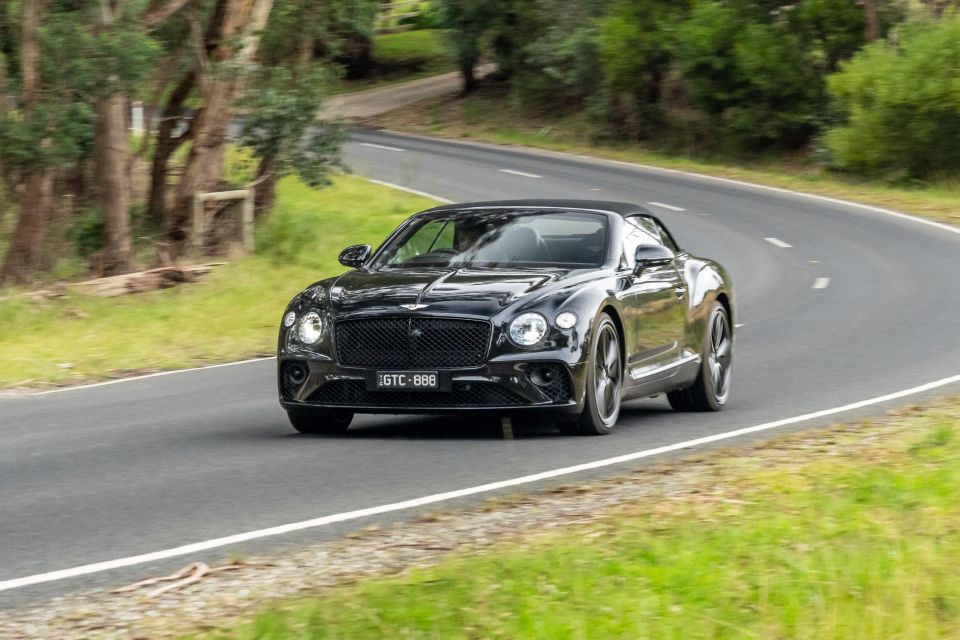
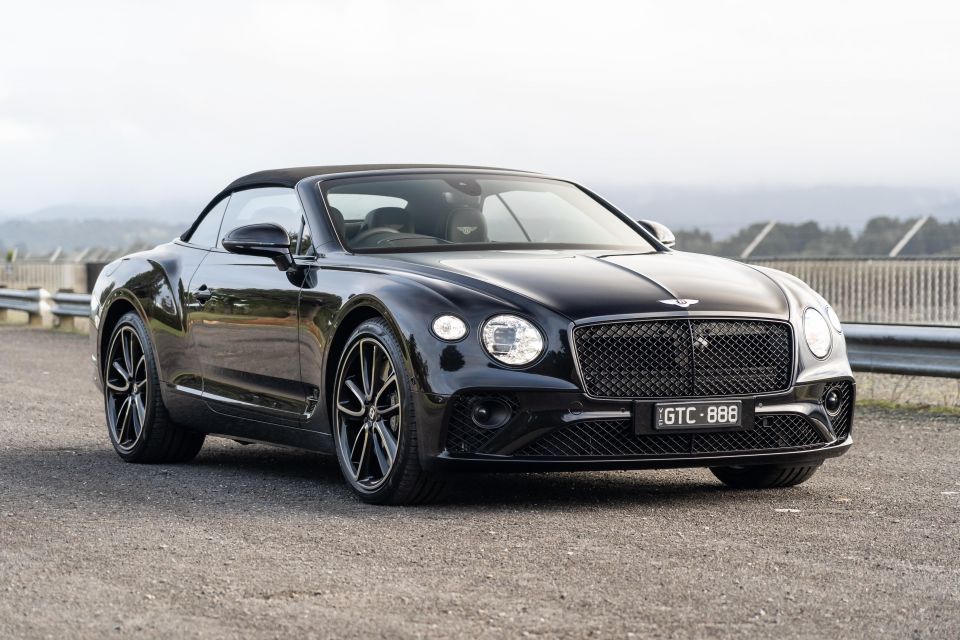

Founder
New from
$400,900
excl. on-roads

Founder
New from
$400,900
excl. on-roads


Founder
New from
$400,900
excl. on-roads

Founder
New from
$400,900
excl. on-roads
Quickly see how this car stacks up against its competition. Select any benchmark to see more details.
Where expert car reviews meet expert car buying – CarExpert gives you trusted advice, personalised service and real savings on your next new car.
There’s no denying Bentley has been making good looking cars for a while now.
While they’ve generally been stunning to behold, in-car technology was never really a strong suit of Bentley. I remember driving the previous-generation Flying Spur and seeing one of the most ancient infotainment systems fitted to a new car.
It was modern about five years earlier in the Volkswagen Touareg, and somehow on in the Flying Spur right up until the very end.
Thankfully, that has all changed. The latest Bentley Continental includes not only the latest, greatest interior interior technology from the Volkswagen Group, it pushes the game forward with 48V mild-hybrid systems to help preserve the mighty W12 engine.
Is the Continental still the ultimate convertible GT cruiser? We hit the road to find out.
The Bentley Continental range kicks off in Australia from $400,900 before on-road costs for the entry-level Continental GT V8 coupe.
From there, the range includes a W12 coupe and a turbocharged V8 GT convertible, finally capping out at $464,600 before on-roads for the Continental GT W12 convertible tested here.

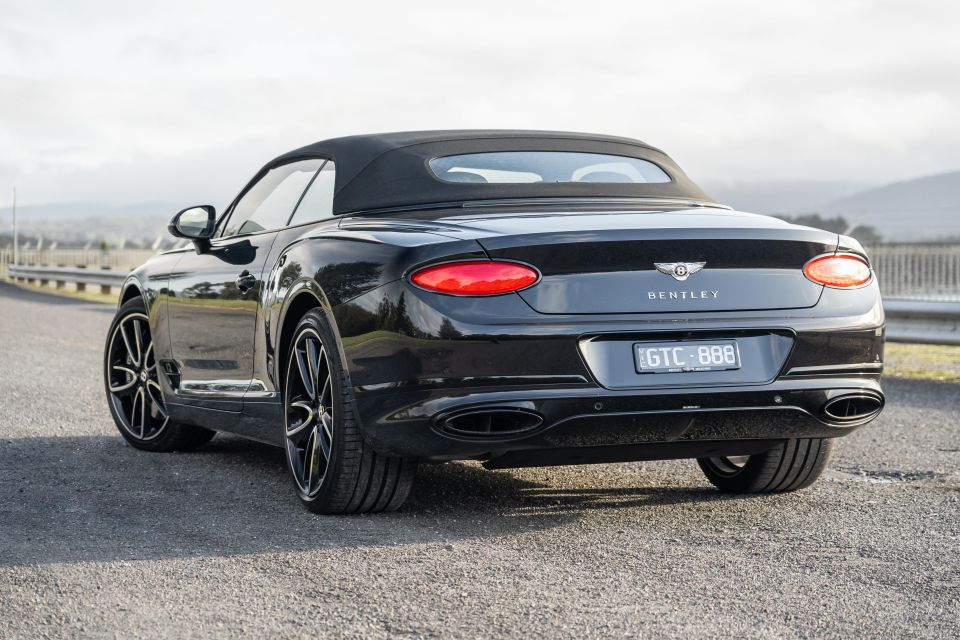
The standard palette includes a number of metallic and solid colours free of charge, but most non-standard colours will set you back an additional $11,969, with more special colours climbing in price from there.
Bentley will also match virtually any colour to create a bespoke finish for your vehicle through its Mulliner customisation program. Some of the customers after a personal commission satin colour, for example, can pay just under $70,000 to customise their vehicle.
Buy your new car without the stress. It's fast, simple and completely free.

Great service from Travis and team, second time I have used this business would not hesitate to recommend them to anyone
Craig C.
Purchased a Ford Ranger in Sunshine Coast, QLD
CarExpert helped Craig save thousands on his Ford Ranger, now let us save you on your next new car.
Find a dealIt’s a little pointless talking about features and trims with a car like this because, just like with a Rolls-Royce, most customers will customise their vehicles and take them way beyond standard.
The customisations can include things like specific seat trims and stitching colours, or perhaps the Centenary Specification ($3630) that was fitted to our test vehicle, which can only be fitted on cars built during 2019 as part of Bentley’s centenary.
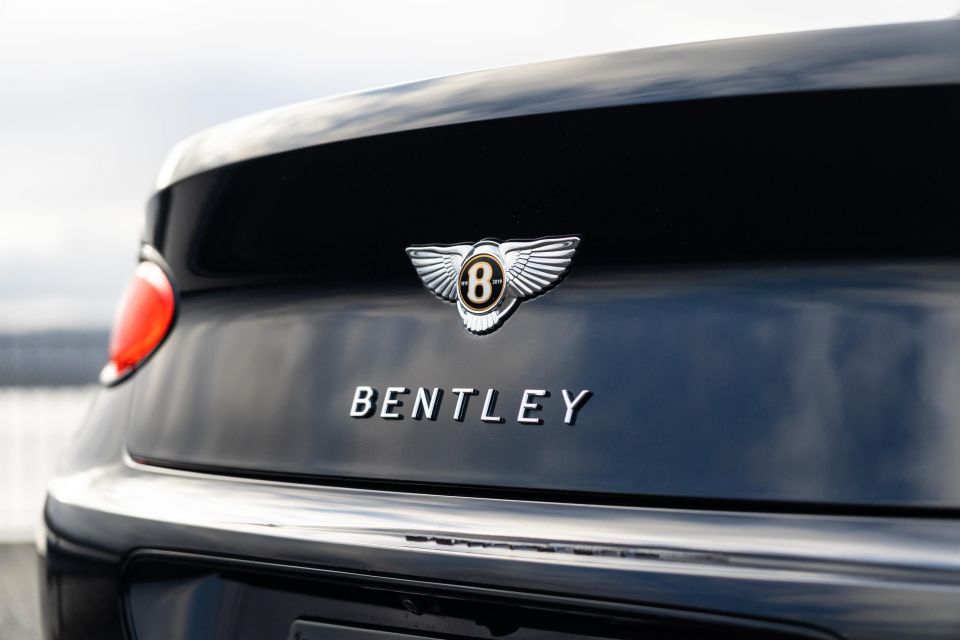
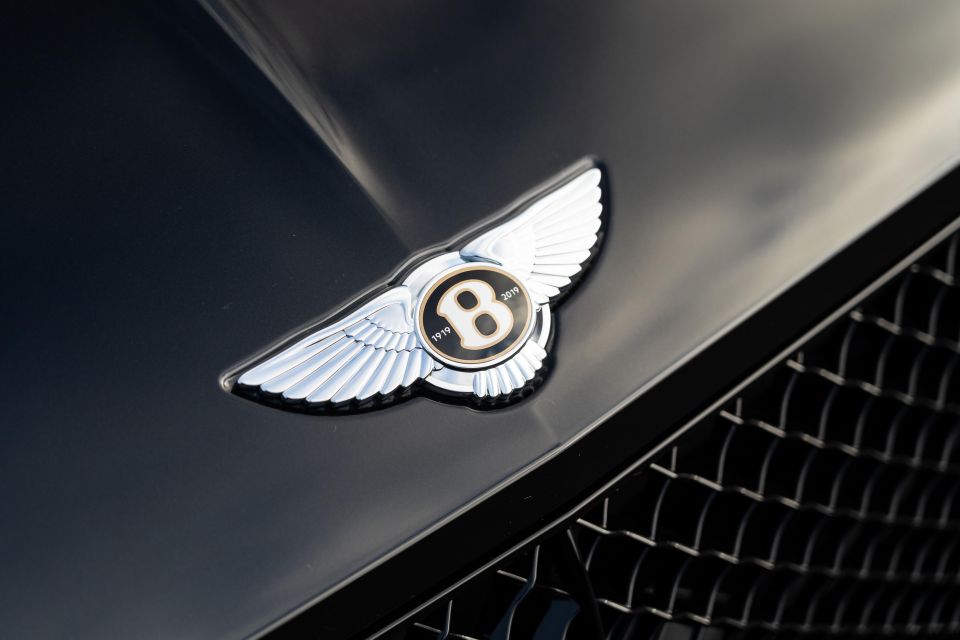
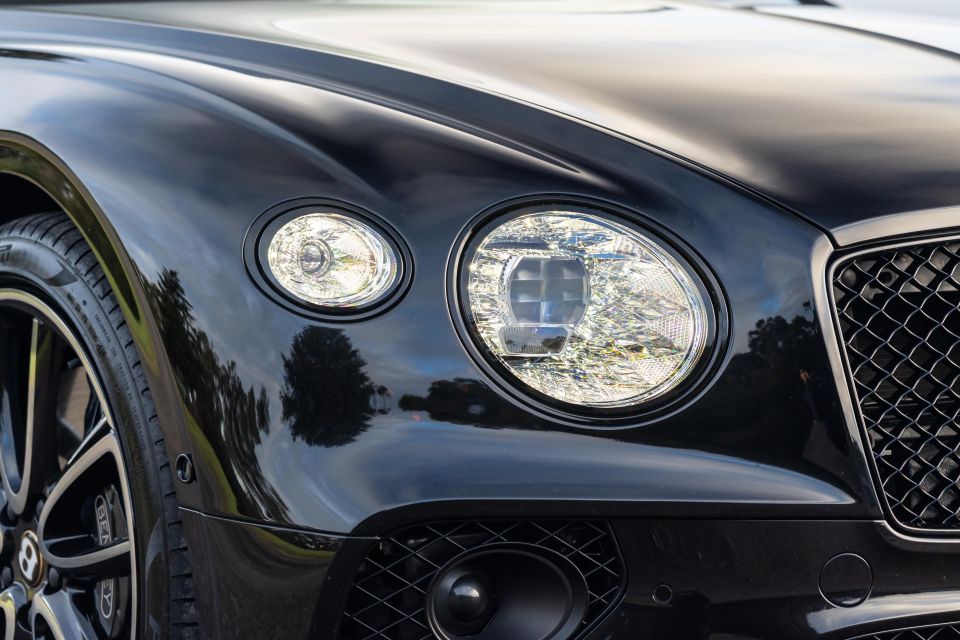
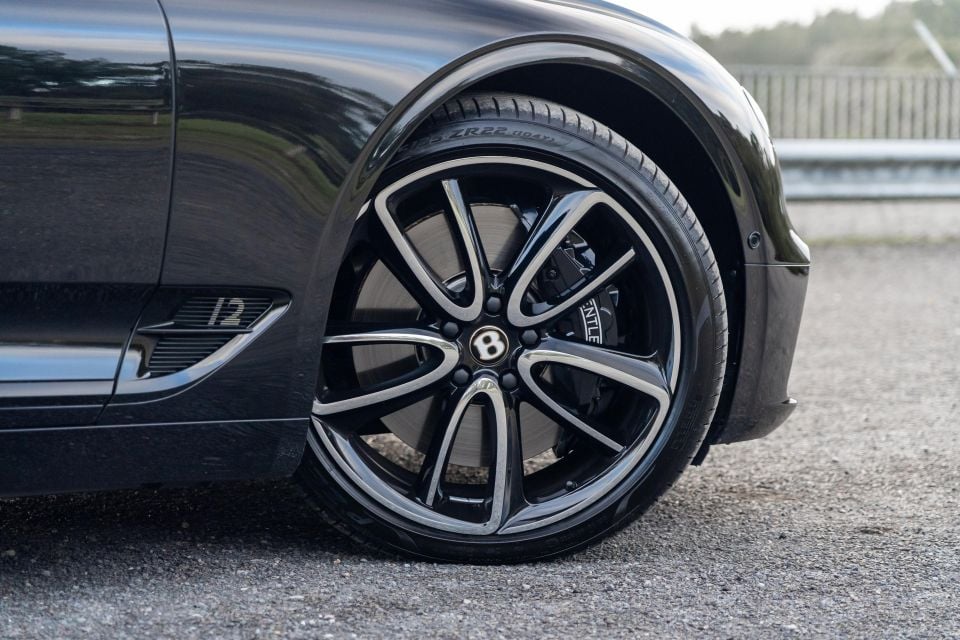
Either way, here are the standard features and the most notable options fitted to our test car.
On the outside you’ll find 21-inch alloy wheels, bi-LED auto levelling adaptive headlights, LED tail lights, LED daytime running lights, a powered tailgate, front and rear parking sensors, and proximity entry/start.
Inside the cabin are leather seats with electric adjustment and memory for the first row, cruise control, heated seats for the first row, dual-zone climate control, a CD player, wired Apple CarPlay, a 12.3-inch infotainment display, a 12.3-inch driver display, automatic windscreen wipers, powered door closer, automatic headlights, and an auto-dimming rear-view mirror.
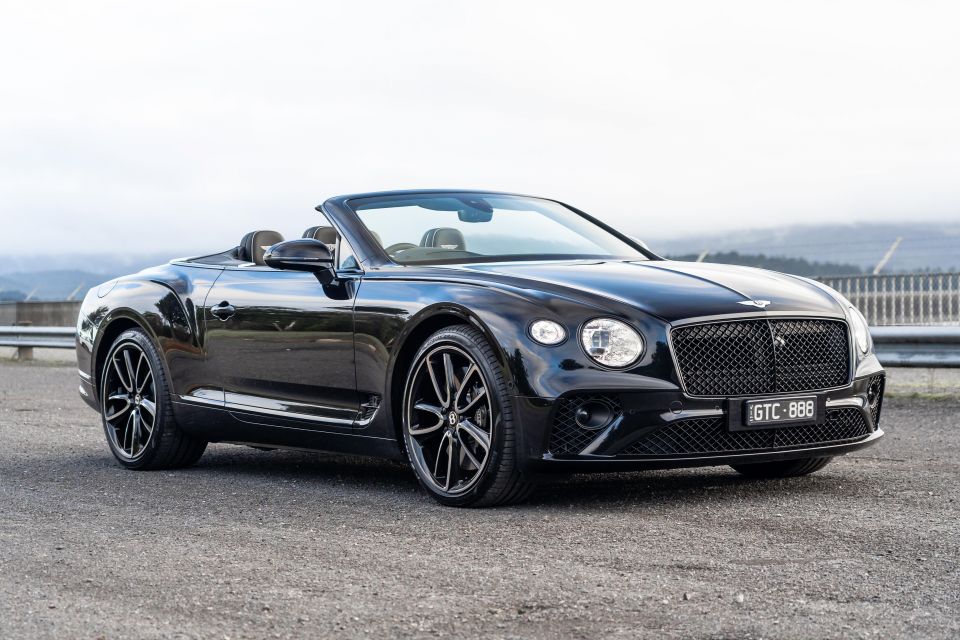
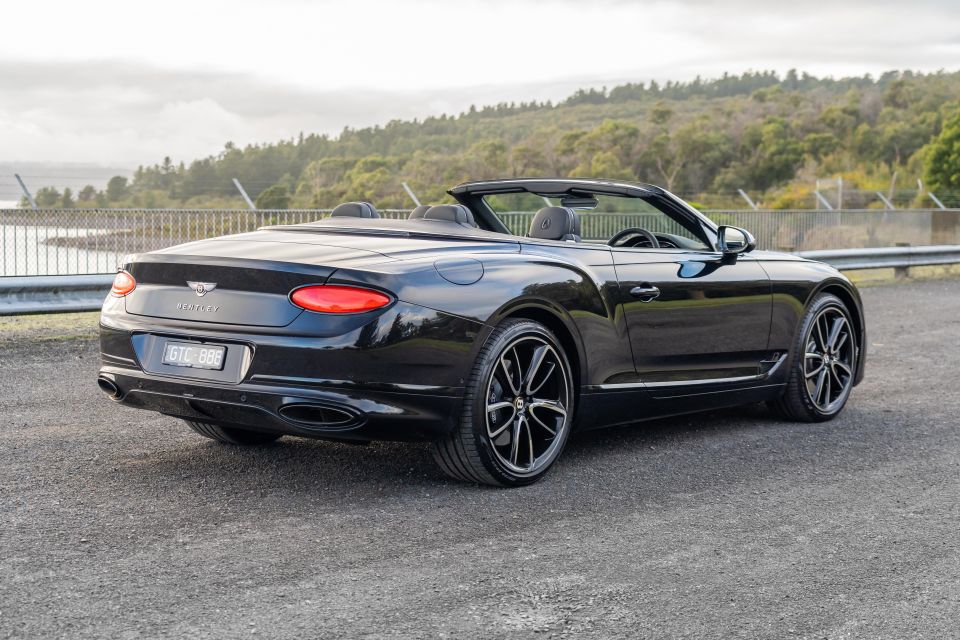
While we understand most buyers will go ahead and option extras they’d like in addition to the standard equipment, it’s disappointing to see basic safety aids are part of a $10,539 option package. This package includes autonomous emergency braking (AEB), rear cross-traffic alert, semi-autonomous parking, and a 360-degree camera, among others.
Our test car had a number of options that added an additional $124,000 to the cost. Notable options included the Mulliner Specification hand-polished alloy wheels ($26,300), the incredible (more on this later) Bentley rotating display ($12,500), and Centenary specification ($3630).
The Bentley Continental hasn’t been crash tested by any crash testing authorities globally.
Standard safety technology includes front and side airbags, along with pyrotechnic bars that deploy in the event of a rollover.
Disappointingly, basic safety technology such as autonomous emergency braking (AEB) or any form of vulnerable road user detection is optional.
In a word? It’s stunning. As you approach the car from the side with the roof down, you get a glimpse of the stunning interior and all its intricacies. Everything has been thought of, from the deep pile carpets through to the knurled switches and levers to open and close air conditioning vents.
The custom specification on our car was well thought out, with diamond quilted stitching offset by white piping and leather lining on every surface you can find.
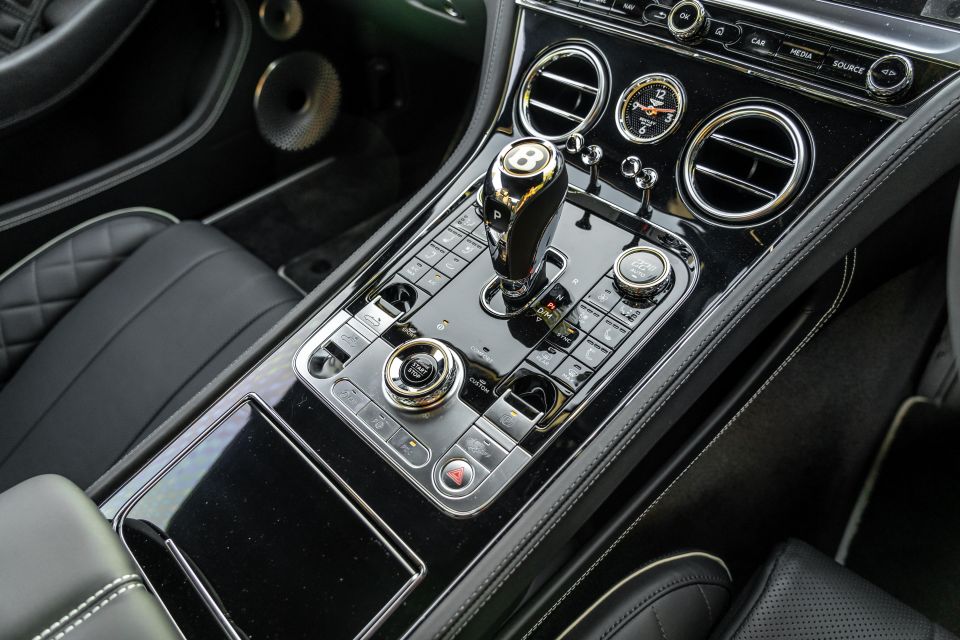
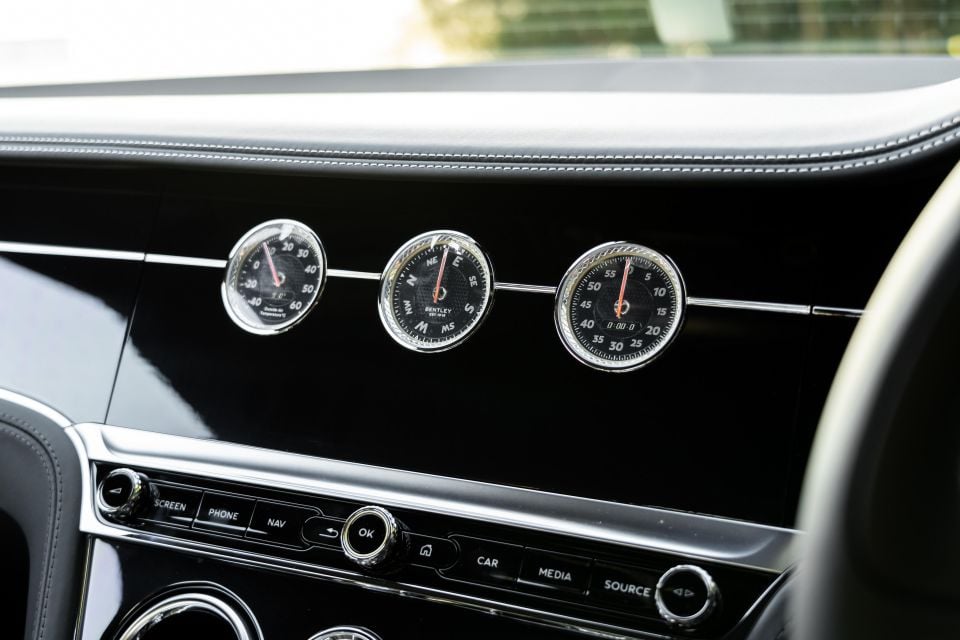
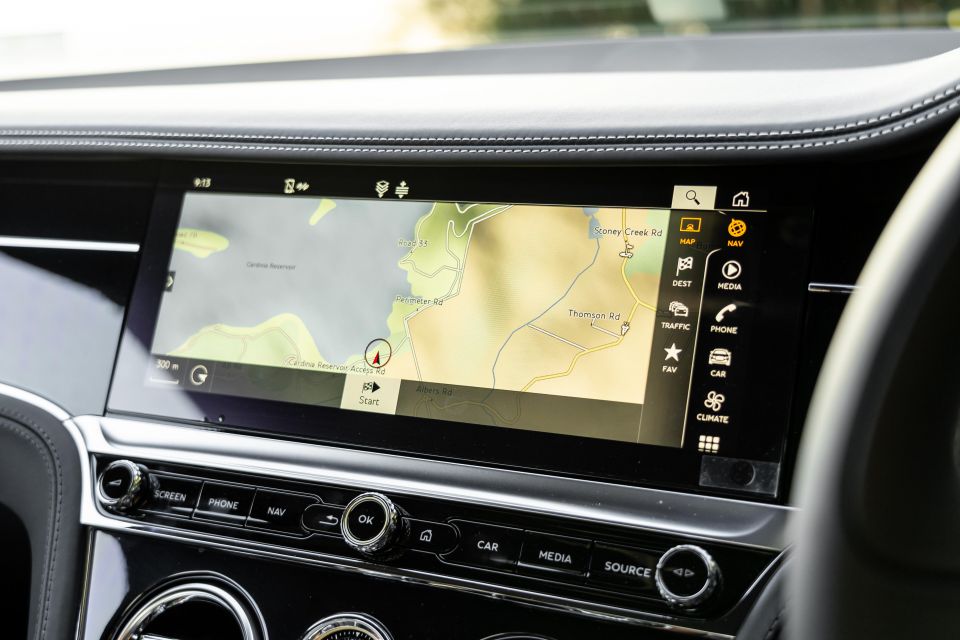
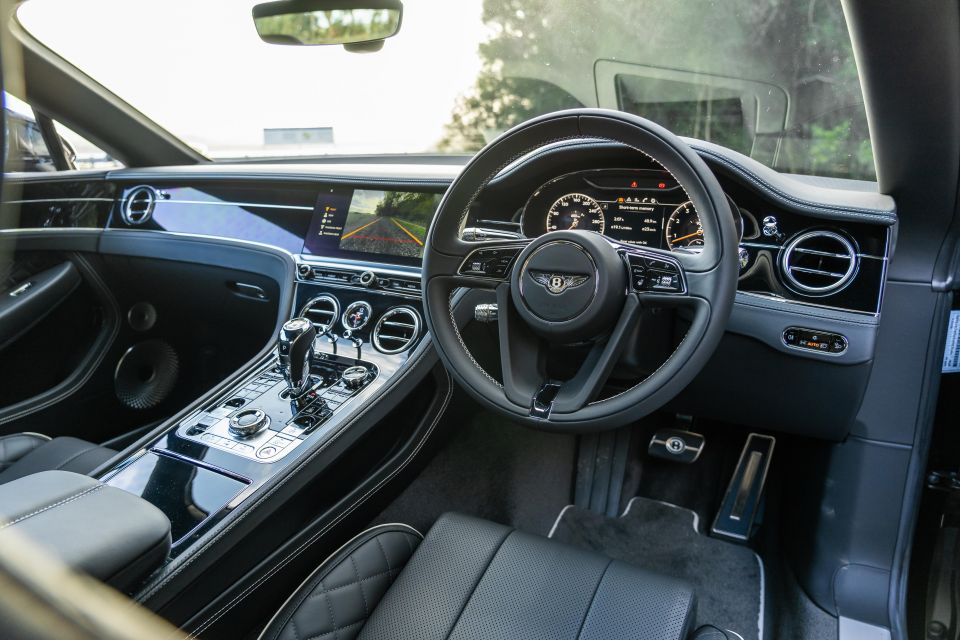
Masses of piano black are a little off-putting given how hard it is to keep the material clean and scratch-free, but the rest of the interior is beautifully presented.
Most importantly, the focus on technology won’t be lost on customers. The 12.3-inch infotainment display is high-resolution and shared with other members of the Volkswagen Group. You’ll find a similar system with a different skin on a number of Porsche models, and it’s a good setup that’s fast and easy to use.
It can be a little fiddly to find some menu items randomly nestled outside of the car’s settings, but for the most part it just takes some time to become accustomed. Standard audio features include FM/AM and DAB+ digital radio, along with Bluetooth audio streaming, a CD player, and Apple CarPlay.
Ahead of the driver is another large display that can be customised in a similar fashion to Audi’s models with the Virtual Cockpit. The view button on the steering wheel allows switching between small and large dials, with the ability to do an almost full-screen map.
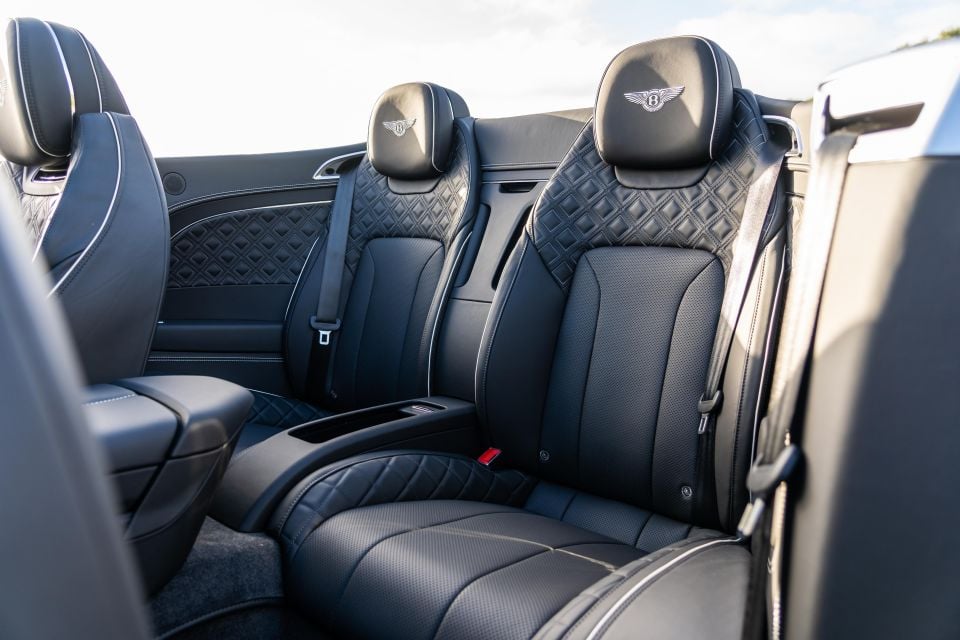
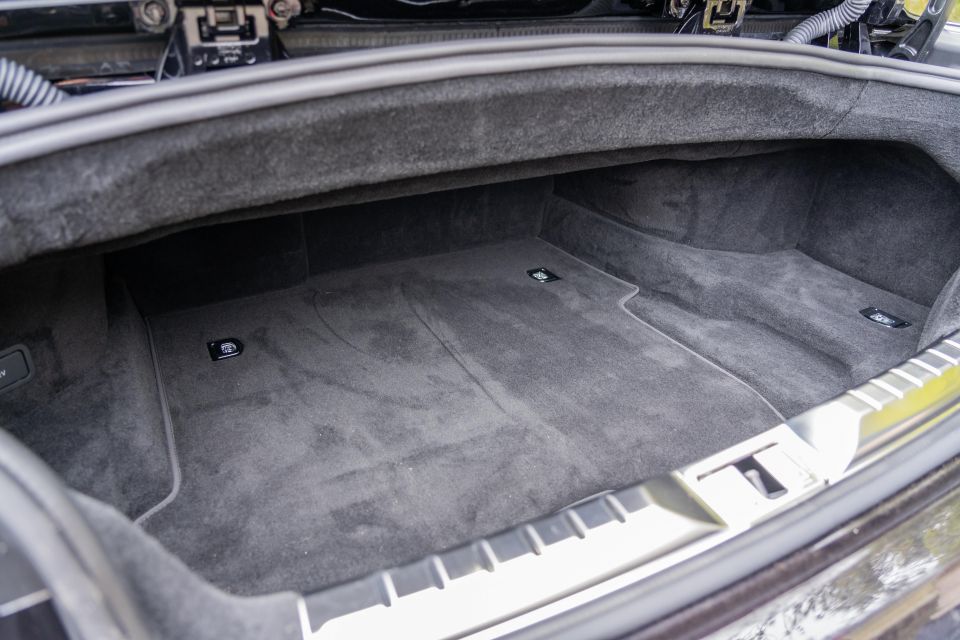
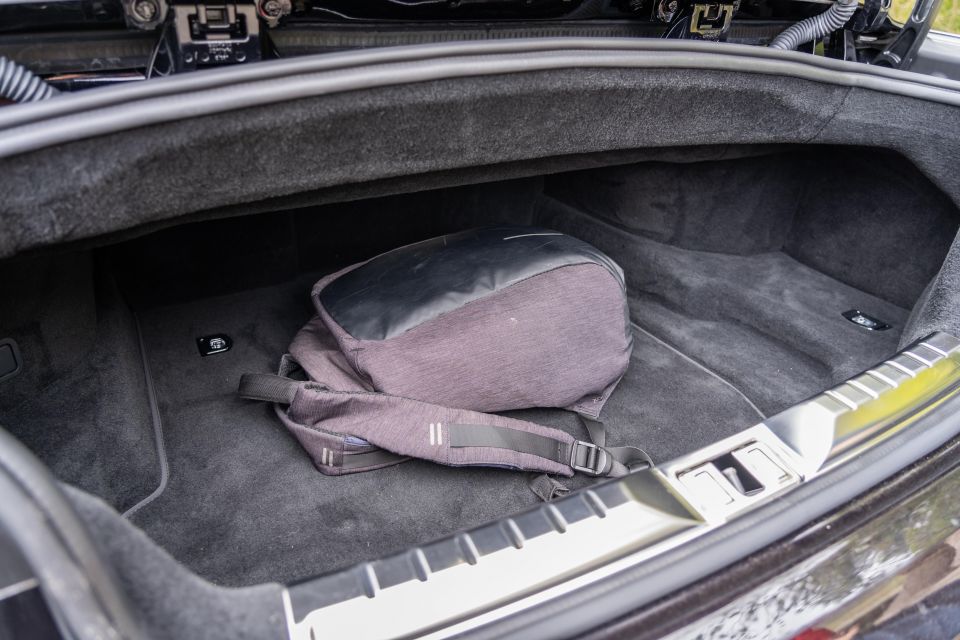
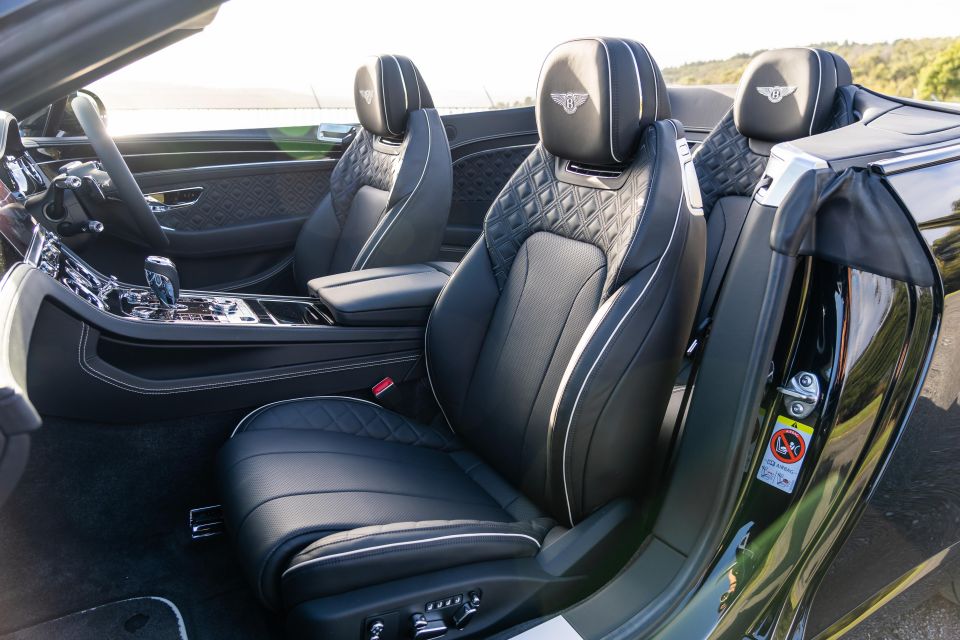
A head-up display can be optioned. It shows the speedometer and also includes additional functionality such as radar cruise control and speed displays when those systems are also optioned.
Build quality and fit and finish around the cabin is excellent, but our favourite part is the Bentley rotating display. The three-position infotainment display can rotate between the infotainment screen, three analogue gauges, or a blank finish at the push of a button.
The rotating display took three years to develop and includes 153 parts, 40 of which are moving. They exist with just 0.5mm of tolerance and 70 per cent of customers will end up optioning the rotating display as part of their order.
Within the display itself is a custom linear gearbox that drives motors attached to an individual ECU that exists just to serve this screen. The movement of the screen happens in three parts, it always pulls inwards, rotates and then pushes back outwards, and it always needs to have the infotainment screen on show in a maximum of two seconds to meet legal requirements.

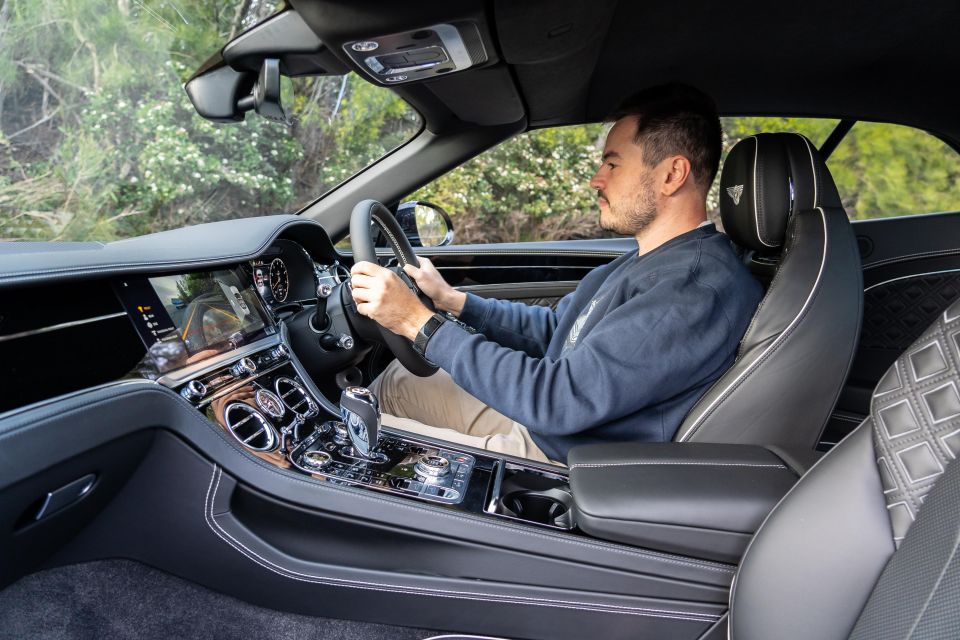
That motion is never the same. Instead of moving in a pattern, the ECU constantly learns adjusts the positioning of the screen to make sure it’s flush with the dashboard. If the car is on an angle or if the body is flexing, it can set itself in the correct position, instead of a preset angle set at the factory.
It really adds polish to the interior, and it’s this type of unique equipment that sets Bentley apart from other luxury vehicle manufacturers.
In terms of cabin space, there’s a modest centre console and two cup holders just behind the gear lever. There’s bottle storage in the doors and a small glove box for storing odds and ends, along with the CD player.


Legroom in the second row is virtually non-existent if the front passenger has their seat in a realistic position. For me to have enough legroom behind the driver’s seat, the driver’s seat had to be so far forward that I would be lurching over the steering wheel to fit.
But there is adequate head- and shoulder room. So if you do need to ferry people in the second row, you’ll need to compromise slightly in terms of driving position to fit them in.
Similarly, cargo space comes in at 235 litres, which is a reasonable amount for a convertible. But the boot lip is so narrow it isn’t big enough to fit a medium-sized suitcase. Under the cargo floor you’ll find the 48V system components and a tyre repair kit.
Powering the Bentley Continental GT W12 is a 6.0-litre twin-turbocharged 12-cylinder petrol engine producing 467kW of power and 900Nm of torque.
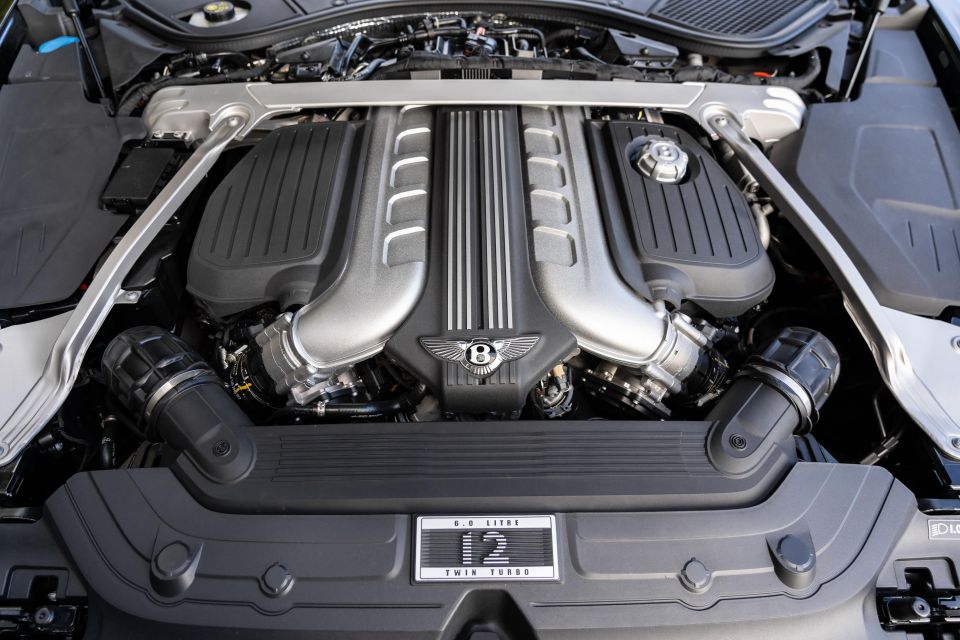

It’s mated to an eight-speed automatic dual-clutch transmission that sends torque to all four wheels and has a claimed 0-100km/h time of 3.8 seconds and a top speed of 333km/h.
Bentley claims a combined average fuel economy of 14 litres of fuel per 100km. On test, we achieved an average of around 17L/100km, but despite the fairly heavy fuel use, the 90 litre tank ensures you’ll get around 600km of driving range from a tank of 98RON premium unleaded.
Backing the drivetrain is a 48V mild-hybrid system, powering the air suspension and working in tandem with an idle/stop system, a coasting feature, and cylinder deactivation – up to six cylinders can be shut down to conserve fuel during light loads – to reduce fuel consumption.
Call me weird, but the most exciting part of this package is the way the W12 cold starts. When you hit the starter button there’s a slightly laboured firing sequence, as the car feeds all 12 cylinders with fuel so it can start and idle.
At idle there’s a throaty note from the dual exhaust outlets. It’s throaty but still classy – switching the knurled drive mode selector to Sport immediately opens the bi-modal exhaust so you have a more pronounced sound at idle and while you’re moving.
I had doubts about the eight-speed dual-clutch transmission with such a big engine like the W12, but it works remarkably well at low speeds and when moving. It’s not overly fussy and is always available to call on for torque. It doesn’t switch to a higher gear immediately for fuel economy, which can often upset a dual-clutch transmission when you then call on it for snappy response.
The broad torque band stretches from 1350rpm through to 4500rpm, meaning you’re never far away from a full slab of 900Nm. That’s also a good thing with a dual-clutch because it won’t try and dive back through gears.
It will instead lead on the generous torque band to deliver speed, as opposed to getting confused and rifling back through cogs.
In addition to a well-behaved gearbox at low speeds, the ride is next level. Sitting on 22-inch alloy wheels, you’d expect the ride to be on the sportier side of comfortable, but the air suspension fitted to the Continental makes it float over every road like it was recently paved and devoid of imperfections.
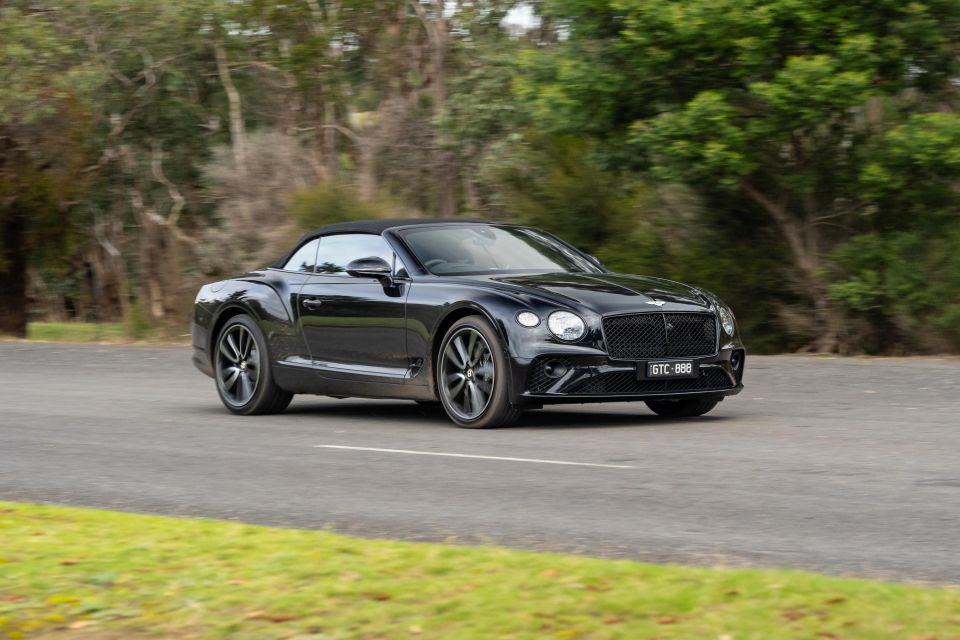

The 48V system operates a three-chamber air-suspension setup with an active anti-roll bar. The system can immediately switch from comfort to sport, where it will lower the ride and use the adaptive dampers to firm up the ride and offer a more aggressive anti-roll setting. It can deliver up to 1300Nm of torque to the roll bar in just 0.3 seconds, which virtually eliminates body roll.
In and around the city, or on country roads that means a smooth ride devoid of sharp thuds or hits, or a firmer but dead flat ride when the Sport mode is enabled.
There are four drive modes to choose from: Sport, Bentley, Comfort and Custom. The comfort and custom modes are fairly self-explanatory, but the default engine start drive mode, Bentley, is all about straddling the line between comfort and sport. It doesn’t firm up the ride entirely, but it offers a quicker adaptive dynamic response to a sportier drive mode if the driver gets stuck into it.
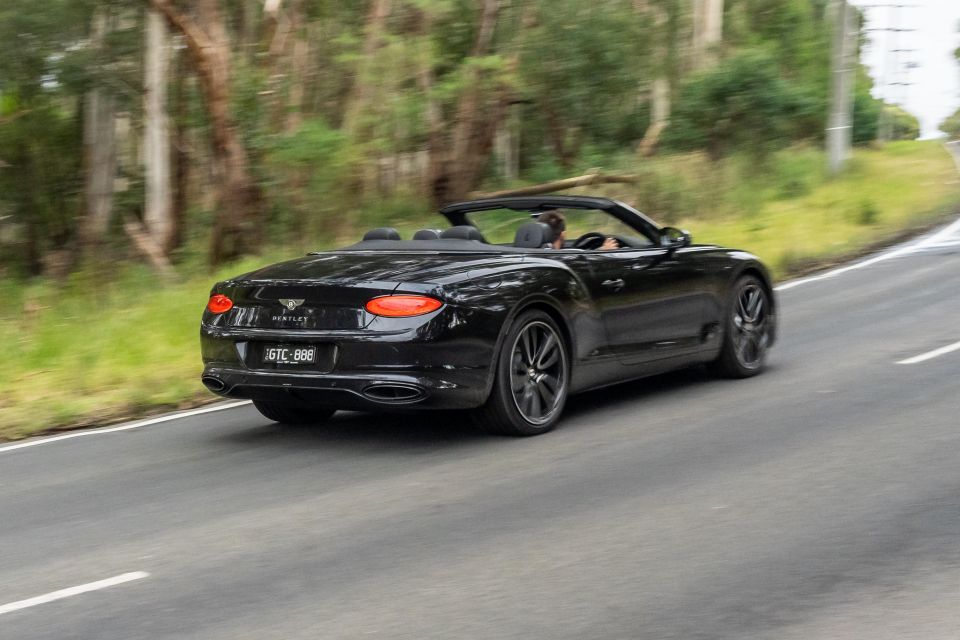
We found a winding set of country roads to stretch the Conti’s legs. The Sport setting lowers the ride height, firms up the adaptive dampers, adds extra steering weight and opens the bi-modal exhaust flaps.
The gearbox also enters a dynamic mode that holds gears for longer and offers a more responsive pedal. The surge of torque is nothing short of amazing – bury the right foot and the engine comes to life. It draws in huge gasps of air to make the most of its 900Nm torque band.
As each new gear is collected, there is a sharp crack from the exhaust with crackles on the overrun. It sounds like a serious sports car, despite its luxurious and laid-back nature. Tipping the scales at just under 2400kg, the Continental GT is no lightweight. You can feel its mass as you enter tight corners.
Having said that, it’s at home on sweeping bends and with a top speed of just over 330km/h, it’s the ultimate way to cross a country with pace.
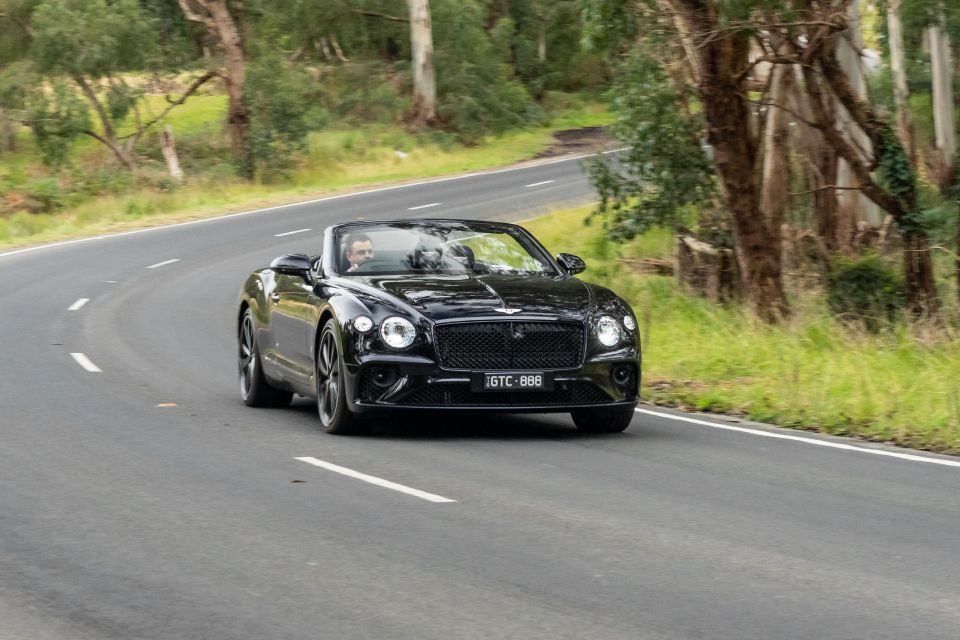
Even on tighter stretches of road, the 48V anti-roll system subdues sharp body movements and the wallowing effect you’d expect of a car this size. Also minimised, but slightly noticed at times, is scuttle shake. In the old Continental convertible, if you had hit a mid-corner bump you’d feel the hit ripple through entire body as it settled.
This latest-generation chassis feels stiffer and better controlled in comparison. In Sport mode it only sends up to 17 per cent of torque to the front axle, so it predominantly feels like a rear-wheel drive vehicle. It has enough tyre – 265mm wide at the front and 305mm wide at the rear – to keep it stuck to the road.
The standard brake package is incredible. The front rotors measure 420mm and feature huge 10-piston calipers, while the rear measure up at 335mm. The pedal always feels confident and responsive, and you never feel like you’re going to run out of brakes.
Steering feel is good, but it can be a little numb and disconnected at times. It’s a variable-ratio rack, but about centre there isn’t a great deal going on. It’s fine for driving in and around the city, but it doesn’t quite have the feel you experience in an Aston Martin DB11 or a Ferrari Portofino.

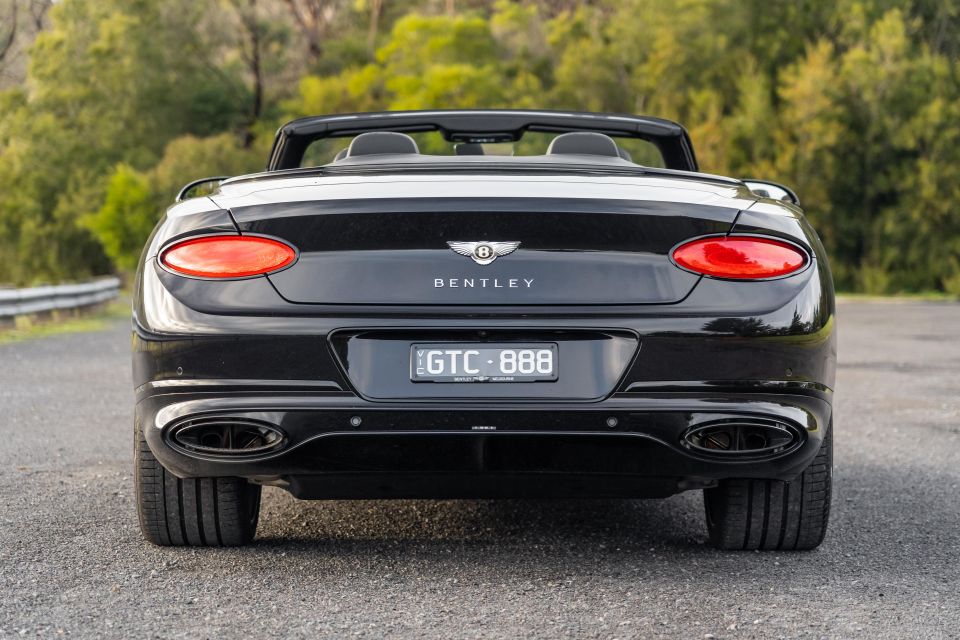
With the roof down, wind suppression in the cabin is good. You can maintain a conversation with your passengers, with the optional neck heater keeps things warm on a cold day. Roof down is also the best way to experience the exhaust, which sounds even more exhilarating on the move.
Outward visibility is good, with decent sized wing mirrors and front/rear parking sensors to make parking easy, and a 360-degree camera and semi-autonomous parking feature with the optional City Specification.
The $16,487 Touring Specification package adds semi-autonomous steering as part of a radar cruise control package with lane-keeping assistant and also includes a night vision camera and head-up display.
Bentley offers a three-year, unlimited-kilometre warranty with service intervals that occur ever 12 months or 16,000km.

Where expert car reviews meet expert car buying – CarExpert gives you trusted advice, personalised service and real savings on your next new car.
Bentley doesn’t offer a pre-paid or capped-price service plan. The first service comes in at $1960, the second costs $2283, and the third will set you back $3374, coming in at an average cost of $2539 per service.
Despite most manufacturers offering either a five or seven-year warranty in Australia, high-end brands are still stuck on poorer three year warranties.
The cheaper and equally potent V8 version of the Bentley Continental GT is the smarter option. It’s more efficient, sounds meaty, and is stacks of fun to drive, but the W12 and V8 will never be cross shopped.
Those who buy a W12 will always buy a W12, and those that buy a V8 will never see the point in the W12.

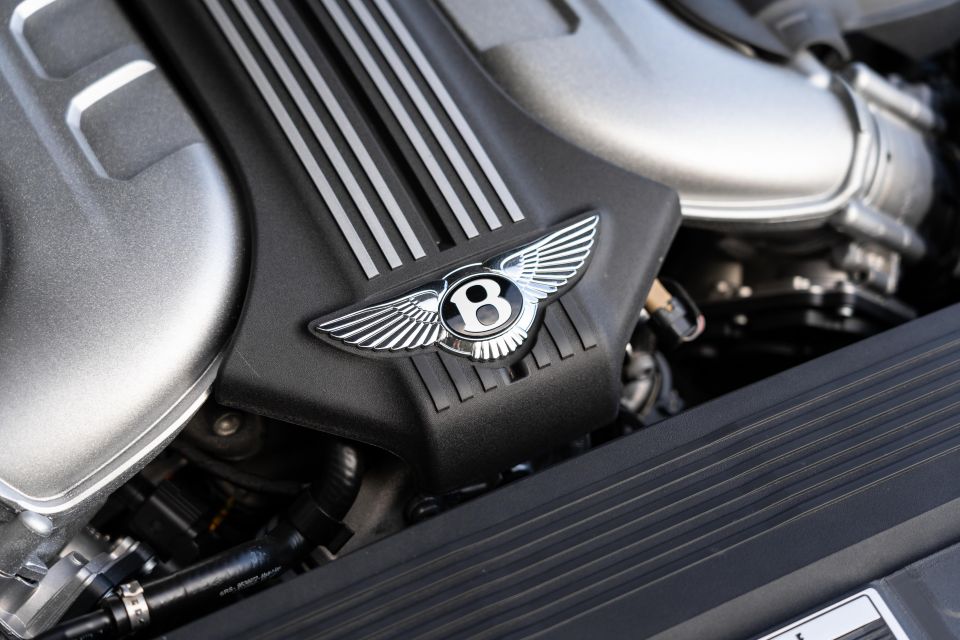
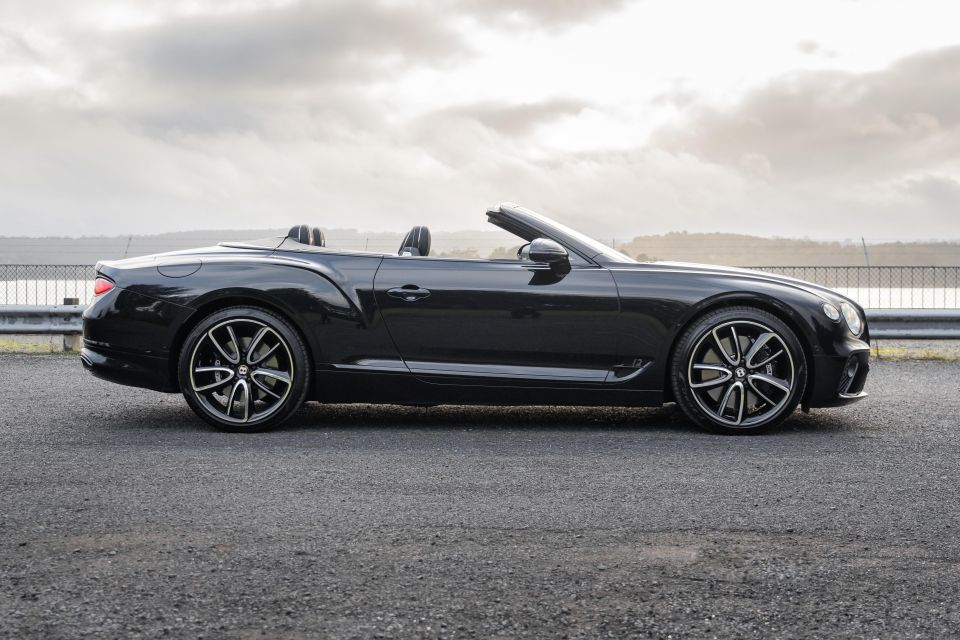
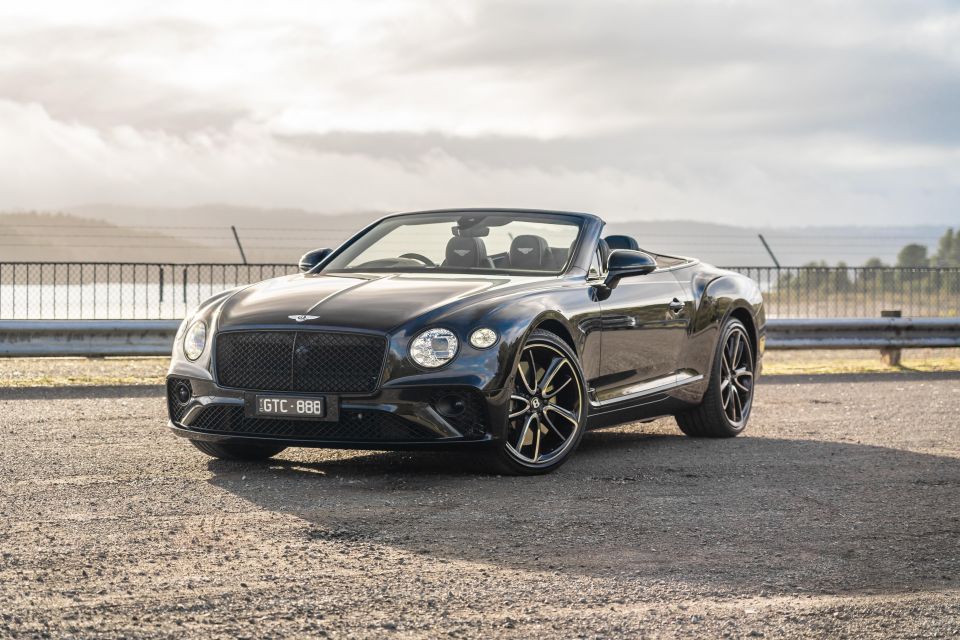
Thankfully though the W12 isn’t just a numbers game. It’s an incredibly smooth engine and still delivers an incredible hit of torque at the drop of a hat. There’s no mistaking the noise and it’ll always be known as the best of the bunch.
This car is all about style and class and it delivers that in droves. It’s hard to think of a car that does pace and grace better than the Bentley Continental GT convertible.
Where expert car reviews meet expert car buying – CarExpert gives you trusted advice, personalised service and real savings on your next new car.
Paul Maric is a CarExpert co-founder and YouTube host, combining engineering expertise with two decades in automotive journalism.


Matt Campbell
4 Hours Ago


William Stopford
20 Hours Ago


Josh Nevett
21 Hours Ago


Ben Zachariah
2 Days Ago


CarExpert.com.au
2 Days Ago


Damion Smy
2 Days Ago